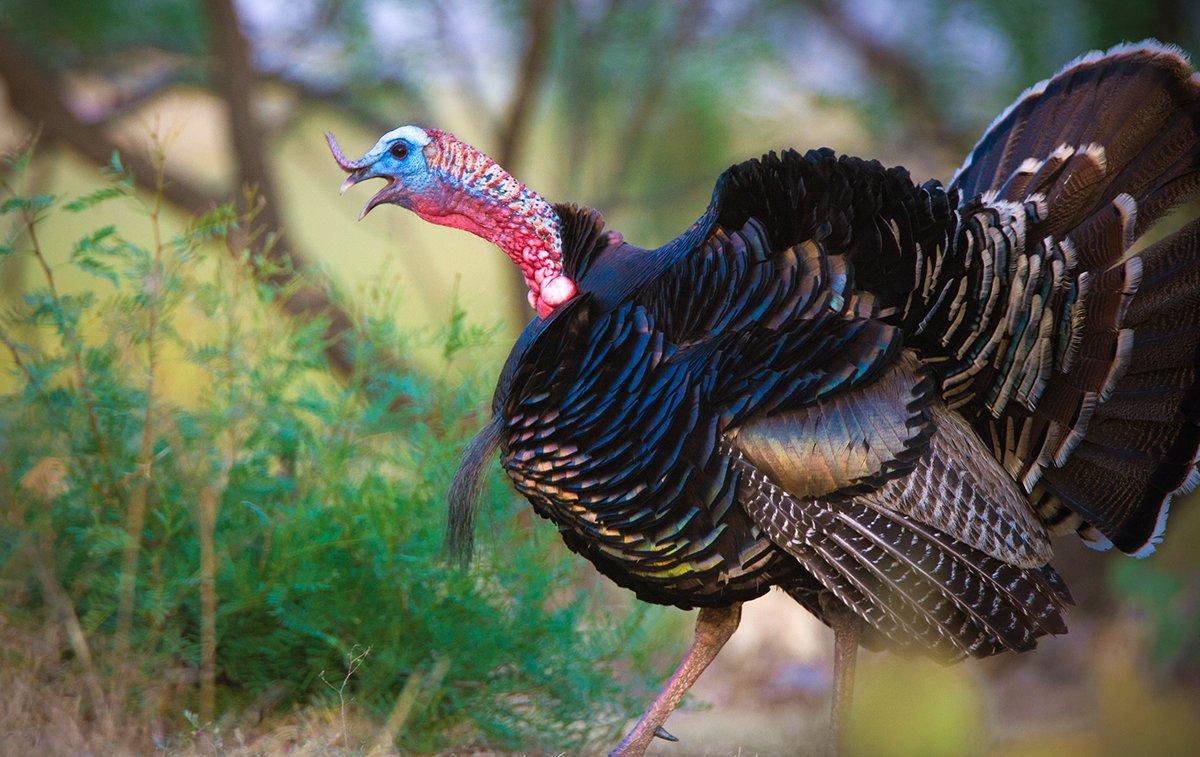Top five picks for the traveling turkey hunter
The Rio Grande turkey subspecies thrives primarily in two top states, with Texas and Oklahoma weighing in as the sweet spots.
In the Southwest, New Mexico and Arizona hold small populations of Rios mixed in with Merriam's (and even Gould's in the latter state). Trap-and-transfer management efforts have also put birds in Kansas, Colorado, Utah, Nevada, California, and even Hawaii. You might even get a chance at Rio-Merriam's hybrids in Wyoming and other states out West.

Texas
You can hunt with well-earned connections and visit as the guest of other like-minded Texas turkey hunters. However, nonresidents usually employ the services of an outfitter, which is often more pricey than a traditional DIY gobbler hunt but far less costly than, say, a Texas whitetail trip. Some ranchers view turkeys as pesky birds. Upside, there's a good chance you'll tag a Rio.
Where to go: Yep, there is some public ground — if you consider less than 1% of the state's total landmass being publicly accessible as some. Wildlife management areas (WMAs) and federal ground in East Texas are also available — but these largely have Eastern subspecies turkeys, and not the Rio you want.
Find more Texas turkey hunting here.
Oklahoma
The Sooner State has far more public land than its neighbor Texas to the south.
As the Oklahoma Department of Wildlife Conservation officially states: Turkeys are no longer confined to river systems, since roost sites are now available in tree rows, shelterbelts and upland timber, which was not available before man settled the Oklahoma prairie. This has dispersed populations of birds across the western three-fourths of the state and made them more accessible to sportsmen. Turkey hunters have a legitimate chance to bag a spring tom on many of the Department's lands open to public hunting.
Where to go: To the west, the Black Kettle WMA has good Rio Grande turkey populations.
Find more Oklahoma turkey hunting here.
[Don't Miss: Early Season or Late. What's the Best Time to Kill a Turkey?]
Kansas
Outfitters have some land tied up for pay-as-you-go trips, but DIY hunts are often more affordable. Both are good options for the turkey hunter short on time. Expect prairie river bottoms, hilly timber, and rolling farmland.
Where to go: Nearly 1.5 million acres of walk-in hunting access: Get your mind around that number.
Find more Kansas turkey hunting here.
New Mexico
Over the years, the National Wild Turkey Federation and New Mexico Game and Fish have captured and transplanted hundreds of Rio Grande wild turkeys (and Merriam's) across the state. This has created and sustained wild turkey populations, conservatively estimated at 15,000 birds.
Where to go: Rio Grande turkeys are primarily located along the Rio Grande River south of Albuquerque and the Canadian River Basin north of Tucumcari.
Find more New Mexico turkey hunting here.
[Don't Miss: There's Another Turkey Hunter in Your Spot. Now What?]
Hawaii
If chasing gobblers at elevations of 6,000 to 10,000 feet in the morning and hanging out on white sandy beaches in the afternoon is your idea of a good trip, then Hawaii is for you. Locations where these Rio Grande turkeys live are high and dry.
One note to consider though — as of this writing, wild turkey hunting is prohibited on the island of Oahu. The reason? According to officials, this is to allow populations to stabilize for future hunting opportunities.
Where to go: The best public hunting location is the massive Mauna Kea Forest on the Big Island of Hawaii.
Find more Hawaii turkey hunting here.
What makes Realtree.com the best online resource for turkey hunters? See for yourself. We cover all things turkey right here.











































